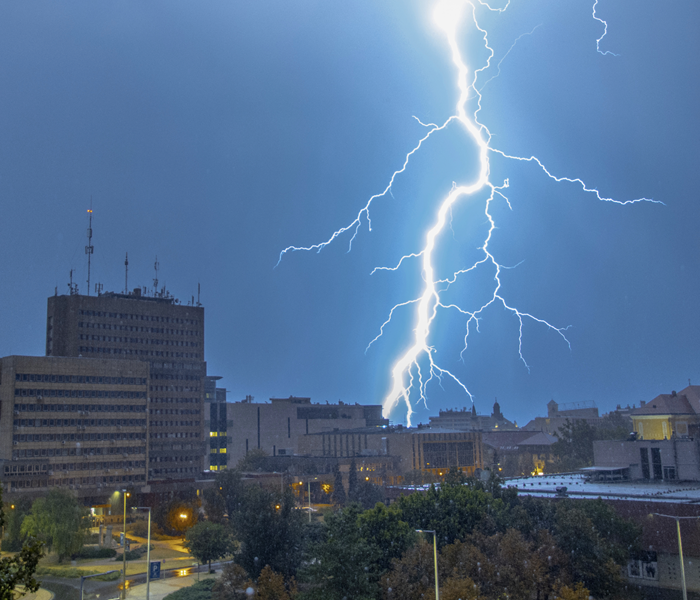How To Protect Your Electronics During Storms
9/28/2023 (Permalink)
Storms can be a significant threat to your electronics. Power surges and lightning strikes can cause costly damage to your devices. Protecting your electronics during storms is essential to minimize the risks of electrical damage, data loss, and even fire hazards. In this blog post, we will discuss some practical tips to safeguard your electronics during storms.
Unplug Your Electronics
One of the easiest ways to protect your electronics during a storm is to unplug them. Unplug all your electronic devices, including computers, TVs, gaming consoles, and home appliances. This will minimize the risk of power surges and protect your devices from lightning strikes. Ensure that you turn off and unplug all electronics before leaving your home or going to bed.
Installing surge protectors in your home is an effective way of protecting your electronics from power surges. A surge protector can absorb excess electricity and prevent it from reaching your devices, thus reducing the risk of electrical damage. Invest in high-quality surge protectors that protect against both voltage surges and frequency surges. Make sure you plug all your electronics into the surge protectors for maximum protection.
Invest in an Uninterruptible Power Supply (UPS)
An uninterruptible power supply (UPS) is a backup system that provides power to your electronics during power outages. A UPS provides temporary power to your electronics, giving you sufficient time to save your work and shut down your devices safely. Investing in a UPS can also protect your devices from voltage fluctuations and power surges. Choose a UPS that's compatible with your electronics and has enough capacity to meet your power needs.
Protect Your Electronics from Water Damage
Storms can also cause water damage to your electronics. Protect your devices from water damage by keeping them away from windows and doors during a storm. If possible, move them to higher ground or a dry area. Cover your electronics with plastic bags or waterproof covers to keep them dry. If your electronics get wet during a storm, turn them off, unplug them, and don't use them until they are fixed.
Using battery-powered devices during a storm can also protect your electronics from electrical damage. Use battery-powered lamps, flashlights, and radios instead of lighting and appliances that rely on the power grid. Battery-powered devices are less vulnerable to power surges and electrical damage during a storm. Keep extra batteries on hand and replace them regularly to ensure your devices are always ready when you need them.
Backup Your Data
Data loss is another risk associated with electrical storms. Protect your data by backing it up to an external hard drive or cloud storage. This will ensure that your important files are safe in case of electrical damage or data loss. Back up your data regularly, so you always have the latest version of your files.
If you have an outdoor antenna or dish, turn it off and unplug it during a thunderstorm. Lightning strikes can damage these devices, causing costly repairs and endangering anyone nearby. Turning them off and unplugging them will protect them from lightning strikes and prevent electrical damage to your home.
Protecting your electronics during storms requires proactive measures and preparedness. Unplug your electronics during a storm, install surge protectors, and invest in an uninterruptible power supply. Protect your electronics from water damage, use battery-powered devices, and backup your data regularly. Consider turning off and unplugging your electronics antenna or dish during a thunderstorm. By implementing these strategies, you can significantly minimize the risk of electrical damage, data loss, and even fire hazards to your electronics during a storm.






 24/7 Emergency Service
24/7 Emergency Service
